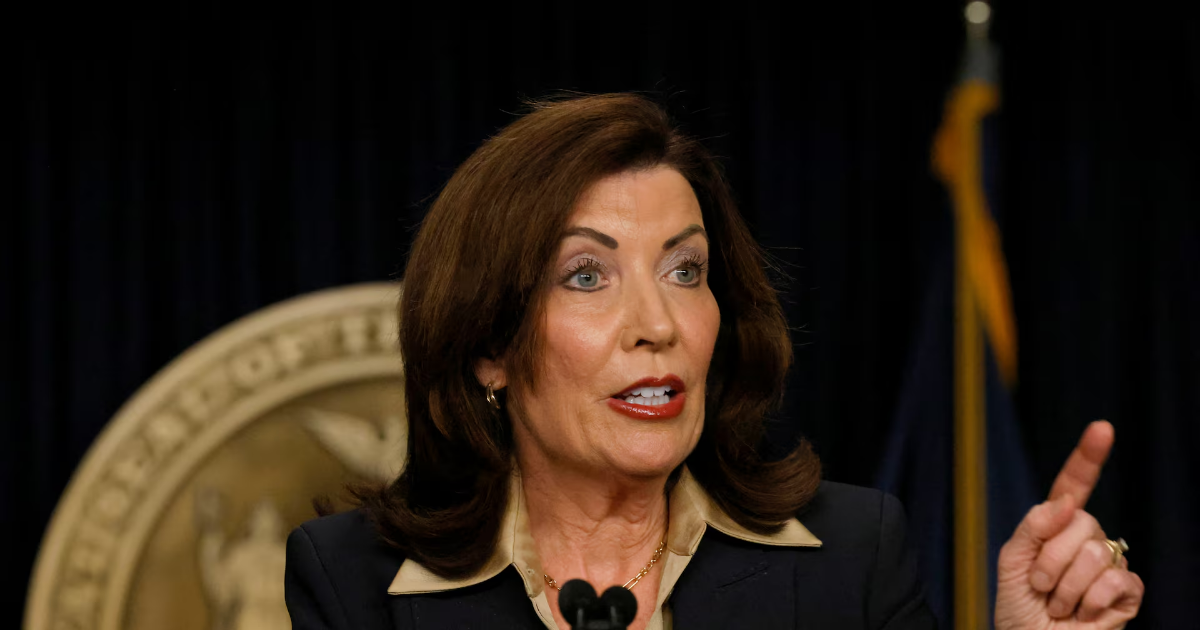NEW YORK, July 31 (Reuters) – New York Governor Kathy Hochul and her acting New Jersey counterpart declared states of emergency for areas facing the threat of flash floods on Thursday from heavy downpours disrupting rail and air travel along the Eastern Seaboard.
The National Weather Service posted flash flood warnings along parts of the Northeast urban corridor stretching from the Washington-Baltimore region north through Philadelphia, Wilmington, Delaware, and into Newark, New Jersey, and the New York City metropolitan area.
Sign up here.
Severe thunderstorm watches were also in effect across much of the Interstate-95 corridor.
The stormy weather appeared to be a key factor disrupting commercial air travel across the Northeast on Thursday.
The eight major airports serving the region – Washington Dulles, Baltimore-Washington, Ronald Reagan Washington National, Philadelphia, Newark Liberty, LaGuardia, John F. Kennedy International and Boston Logan – accounted for the cancellation of at least 1,170 airline flights into, out of or within the U.S., according to online flight tracking service FlightAware.
Passenger rail travel was also hampered, with Amtrak reporting service halted between Philadelphia and Wilmington due to severe storms causing high water to flood the tracks.
A daily rainfall outlook map issued by the Weather Prediction Center put the risk of “excessive” showers capable of triggering flash floods at 40% or higher for a swath of the mid-Atlantic and Northeast that is home to 37 million people.
Up to 5 inches (12.7 cm) of rain was forecast in the heaviest bands of showers expected across New York City, Long Island and the Hudson River Valley, with rainfall rates that could exceed 2 inches per hour, according to a statement from Hochul.
“I am urging all New Yorkers to stay vigilant, stay informed, and use caution as we expect excessive rainfall with the potential for flash flooding,” Hochul said.
New Jersey was bracing for rainfall totals of 1 to 3 inches generally, with localized downpours that could produce 5 to 7 inches, acting New Jersey Governor Tahesha Way said in her declaration.
She warned that the extreme rainfall could trigger landslides, rock slides and flash flooding of roadways across New Jersey, with additional hazards posed by damaging winds from thunderstorms.
“Residents should remain off the roads and indoors unless absolutely necessary,” Way, the lieutenant governor, said in a statement. She is temporarily serving as the state’s chief executive while Governor Phil Murphy was out of the state on vacation with his family.
The Weather Service attributed the storm threat to a cold front that was bringing a combination of unstable air mass and exceptional amounts of atmospheric moisture to the region.
Reporting by Joseph Ax in New York; Writing and additional reporting Steve Gorman in Los Angeles; Editing by Sandra Maler and David Gregorio
Our Standards: The Thomson Reuters Trust Principles.
